Achieving Perfect Diving Trim: Your Path To Effortless Dives
Reliable scuba diving trim is the foundation from which all subsequent diving skills develop. Without consistent flat trim in the water, it becomes very challenging to improve abilities like buoyancy control and propulsion.
What is scuba diving trim?
Scuba diving trim is the position and angle of our body in the water.
Diving Trim: the degree to which a scuba diver maintains level horizontal postioning with their shoulders, hips and knees in flat alignment
- Optimal scuba diver trim means that the diver is flat and level in the water.
- Their shoulders, hips, and knees should be aligned horizontally.
- Ideally, they should not deviate from that level positioning by more than 10-15 degrees throughout their dives.

The divers’ trim proficiency is measured as much by consistency as it is by accuracy. Some agencies, such as GUE, RAID and UTD, have standards where trim must be consistent on all training dives.
Why is scuba diving trim beneficial?
- Developing your scuba diving trim is a huge benefit for a number of reasons.
- As your trim improves, you will notice swift development of your all-around confidence, competence, and comfort as a scuba diver.
You will be more streamlined
Being in flat horizontal trim makes you much more streamlined through the water. That streamlining decreases the water resistance that you have to overcome as you move around.
Put simply, less water resistance equals less muscle use: streamlining reduces the amount of exertion needed to move around underwater. Scuba diving becomes easier and less tiring: improved technique reduces the effort needed.

The consequence of reduced exertion is a lower cardio-respiratory demand: you will breathe less gas on your dives. Your air will last longer as your consumption rate improves.
You won’t disturb the silt
The other benefit of having a good horizontal trim position is that your fins are held higher above you.
- This helps prevent unintended disturbance of the bottom; which can reduce visibility underwater.
- Kicking up silt and sediment is an annoyance for photographers and fish spotters.
- It ruins the visibility on dive sites.
- For wreck and cave divers silt outs are a critical hazard to safety.
Your buoyancy control will improve quicker
Many divers move around underwater in a legs-down trim position. If they were 45 degrees out of trim, it would mean that 50% of their exertion was actually devoted to maintaining their depth. Only half of their effort would be working to propel them forward.
Not only is this wasteful of effort (and gas!), it also means that the diver will observe that they sink downwards whenever they stop finning.
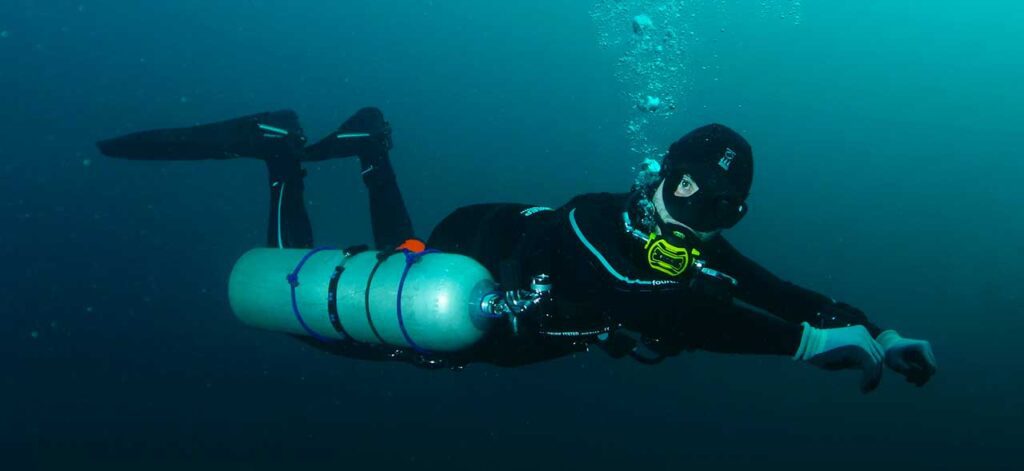
Being out of trim means that the diver is never attaining true neutral buoyancy. They will always be compensating for negative buoyancy with their fins. If the diver was actually neutrally buoyant, finning whilst in feet-downwards trim would inevitably make them ascend.
- Developing reliable scuba diving trim stops counter-productive and inefficient buoyancy compensation.
- This ensures that the diver remains well-attuned to their actual buoyancy.
- It becomes easier to make adjustments by adding or removing gas from the BCD because the diver gets immediate and accurate feedback.
Improving scuba diver trim means that you’ll get good at buoyancy control really fast.
Barriers to developing great scuba diving trim
I’ve noticed a tendency for novice-to-intermediate level divers to fixate almost exclusively upon equipment solutions to make themselves in trim.
Their first resort is to start using ‘trim weights’, followed afterward by serious consideration about the buoyancy characteristics of their scuba equipment.
Equipment solutions are more appealing than skills-based solutions, but will never resolve underlying skills problems.
In most cases, the primary cause of bad trim isn’t the diving equipment. It is almost invariably just a simple combination of:
- Ingrained bad habits
- Lack of knowledge
- Insufficient or incompetent dive training at the outset
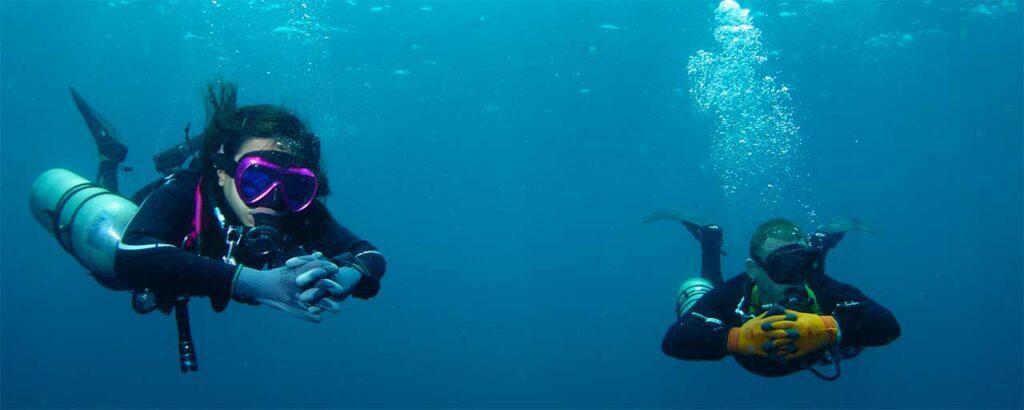
Conditioning to drop the legs during dive training
Low-quality entry-level scuba diving training can actually condition a diver to habitually drop their legs and/or knees.
This is typical in diving courses where the instructor teaches skills from a kneeling position and encourages their students to revert to a vertical position whenever they stop finning, perform a skill, or practice their buoyancy.
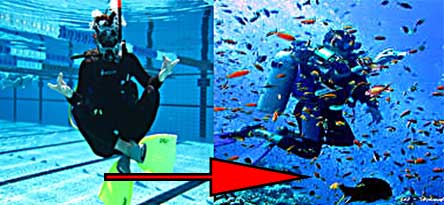
The infamous ‘Buddha position’ still used by some instructors to demonstrate hovering has caused more than its fair share of diver frustration long after open water courses have ended.
Once the bad habit of dropping out of trim has been conditioned into the diver, it gets further ingrained as they gain more experience and keep repeating the mistake.
Bad habits and undesirable responses require significant focus and dedicated practice to eliminate.
You dive how you train. Bad training equals bad diving.
Misunderstanding what proper trim feels like
Being in horizontal scuba diving trim will initially feel like you’re a little head down. Even consciously trying to maintain flat trim, divers can think they are horizontal but actually be feet down and out of trim.
A simple test to see if you are in trim when diving
An effective and simple test to gauge whether you are in good scuba diving trim is to tuck your chin down into your chest and try to look behind you.
- If you are horizontal, you will see the water behind you.
- If not, you’ll be looking down towards the floor.

A student practicing trim posture on dry land prior to fundamental skills training.
Incorrect body posture for scuba diving trim
The shoulders, hips, and knees must be level at all times. That is best described as a ‘body posture’ necessary to promote consistent trim. The most common mistake ruining that posture is to allow the hips to relax and the knees to drop.
This problem can be overcome by simply maintaining a slight tension in the buttocks. That tension is the most effective way to keep your hips ‘locked’ and prevent yourself from sagging at the waist with dropped knees.
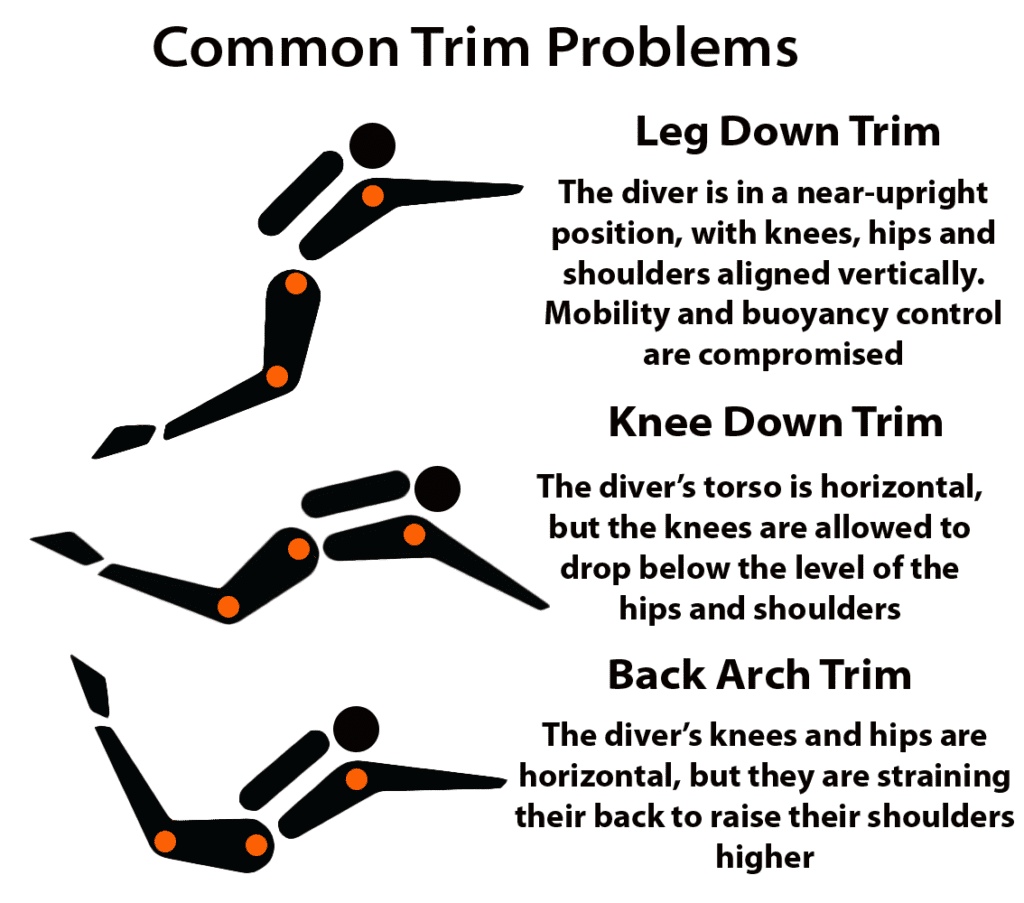
Try to pay attention to the alignment of your shoulders, hips and knees when you dive. Whenever they are not in alignment, you will struggle to attain good scuba diver trim: and all the skills that rely upon it. Being able to self-assess your diving posture is the quickest route to achieving great trim.
Overweighting
Carrying superfluous weight necessitates adding more gas to the BCD. As that weight is typically below your center of gravity, it is liable to pull your lower torso downwards.
- Having too much weight also necessitates putting more gas into your BCD.
- Distribute your weight to balance the ‘see-saw’ of positive and negative buoyancy forces.
- Consider where your BCD holds gas across that balancing point.
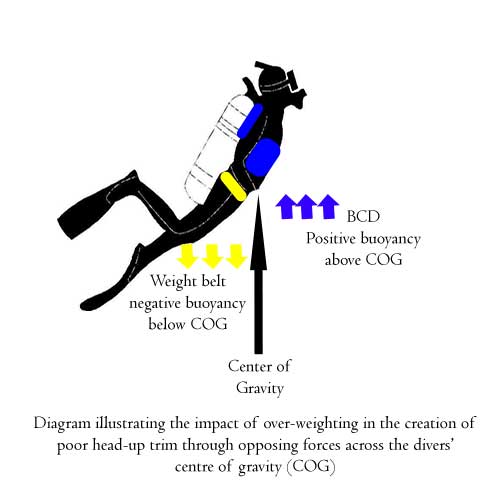
Not only does that make buoyancy control harder, but it also exacerbates the complication of having a larger volume of gas moving around in your BCD whenever your trim position changes.
If you drop a little bit leg-downwards then all that gas will rush to the top of your BCD. That will definitely pull you out of ideal trim.
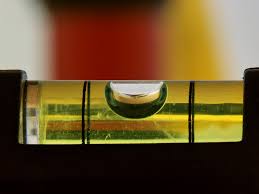
When you are diving, try to visualize the gas moving around inside your BCD. It works like a builder’s spirit level. Gas always moves to the highest point in your BCD.
It is a diving skill to control where that gas stays within your BCD. With practice, you can learn to shift the gas around and hold it in a location where it contributes to your horizontal trim. If all the gas has risen to your shoulders, you’ll need to get your ass raised to move the gas down to the bottom of your BCD bladder.
Further improve your diving skills with these great articles
About The Author

Andy Davis is a RAID, PADI TecRec, ANDI, BSAC, and SSI-qualified independent technical diving instructor who specializes in teaching sidemount, trimix, and advanced wreck diving courses.
Currently residing in Subic Bay, Philippines; he has amassed more than 10,000 open-circuit and CCR dives over three decades of challenging diving across the globe.
Andy has published numerous diving magazine articles and designed advanced certification courses for several dive training agencies, He regularly tests and reviews new dive gear for scuba equipment manufacturers. Andy is currently writing a series of advanced diving books and creating a range of tech diving clothing and accessories.
Prior to becoming a professional technical diving educator in 2006, Andy was a commissioned officer in the Royal Air Force and has served in Iraq, Afghanistan, Belize, and Cyprus.
In 2023, Andy was named in the “Who’s Who of Sidemount” list by GUE InDepth Magazine.
Purchase my exclusive diving ebooks!
Originally posted 2018-03-07 23:57:10.







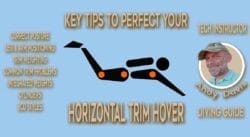
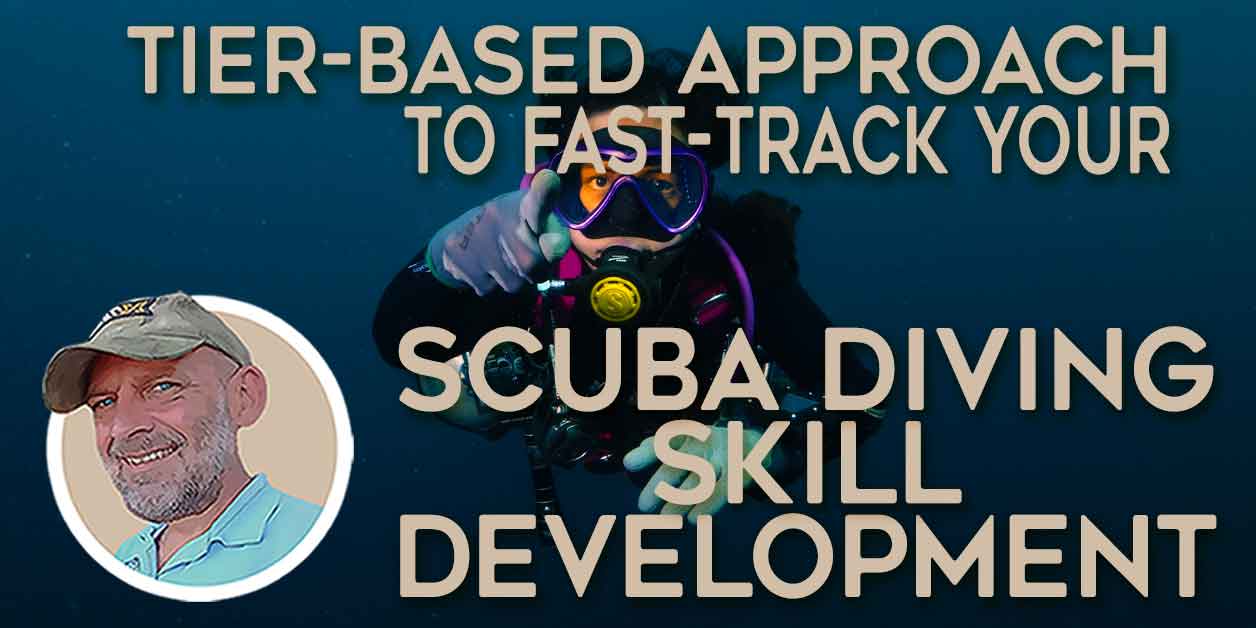
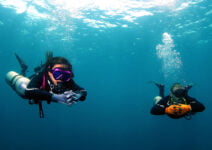
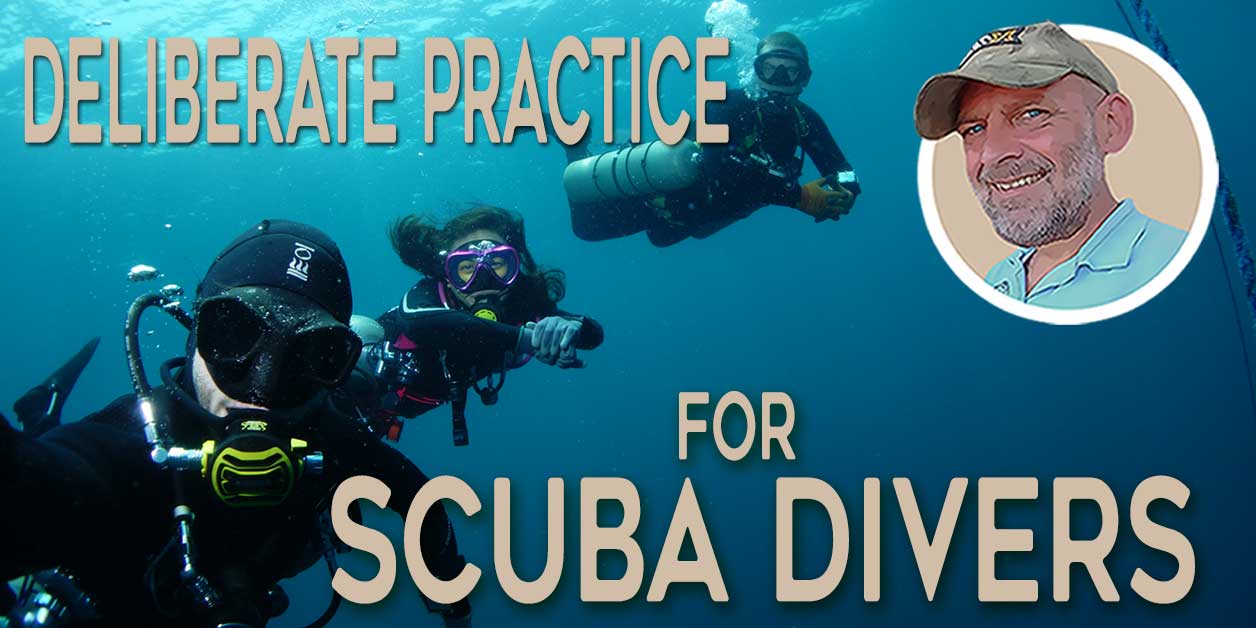
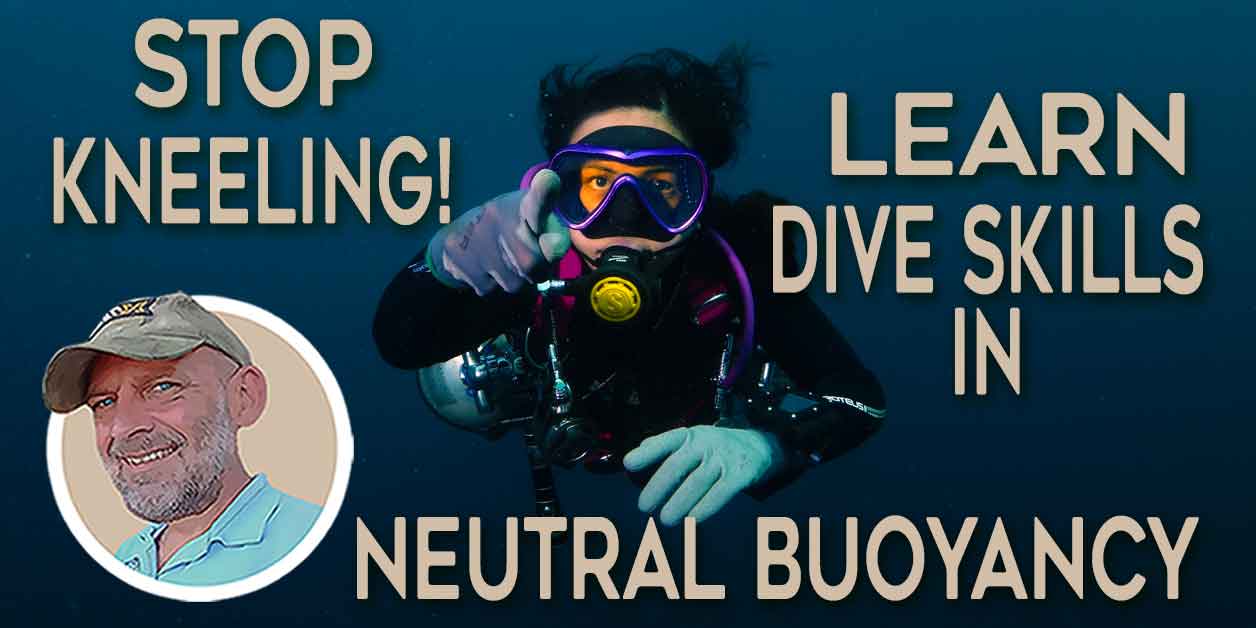
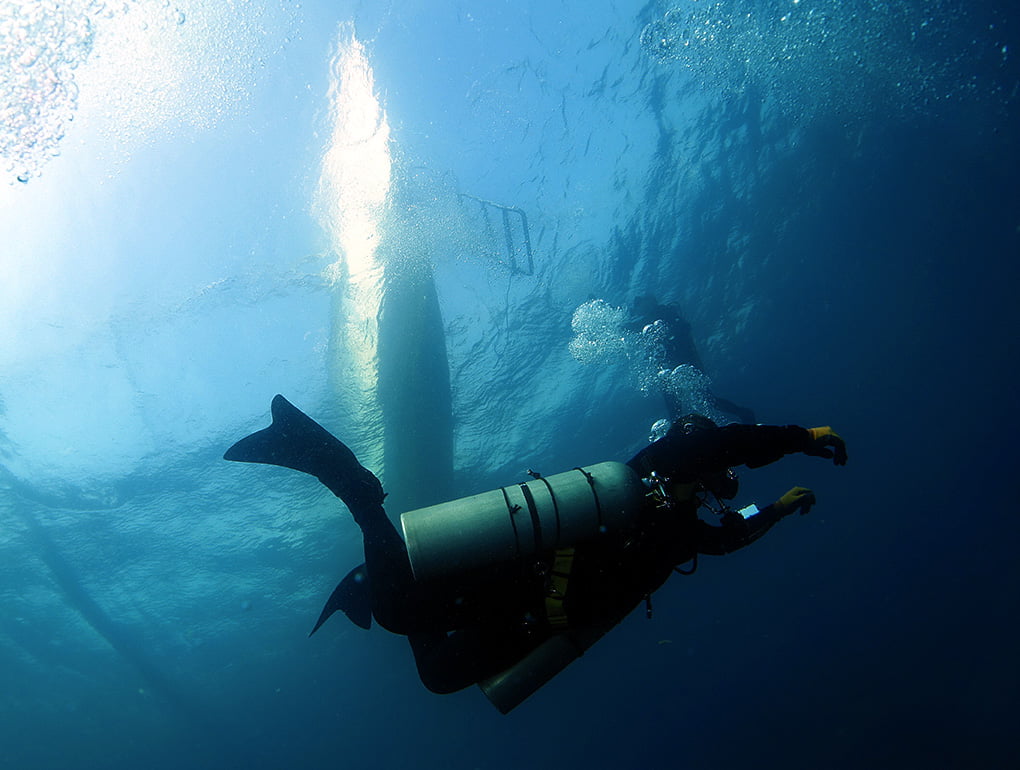
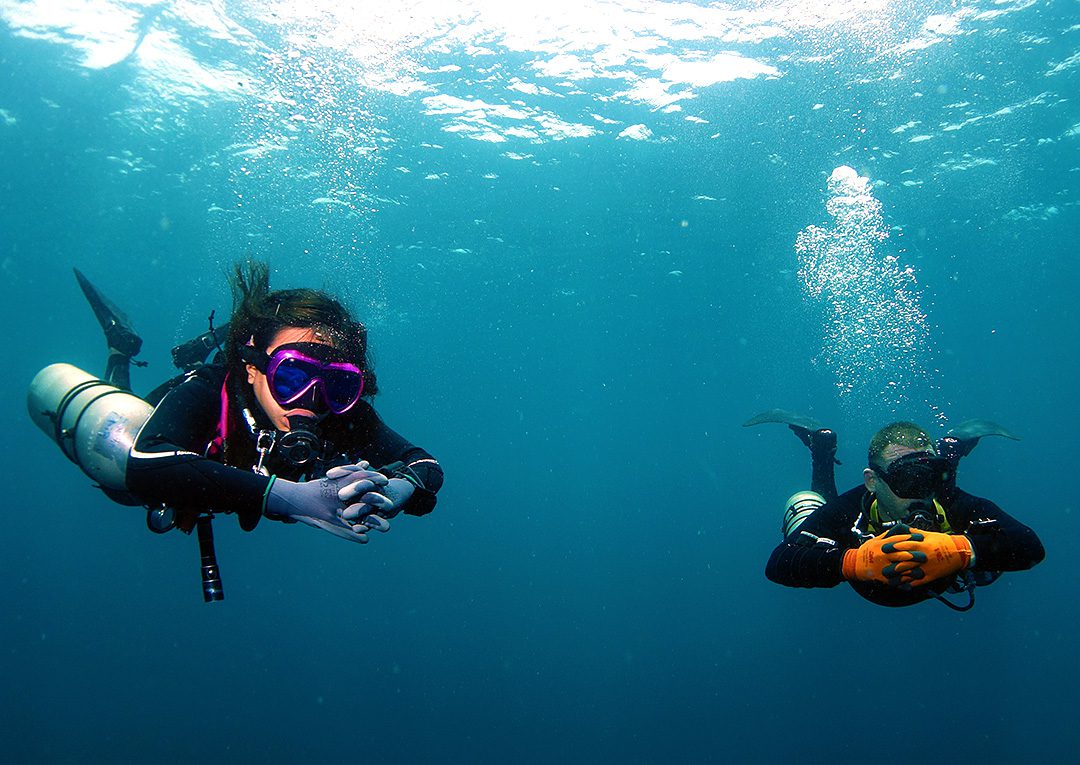
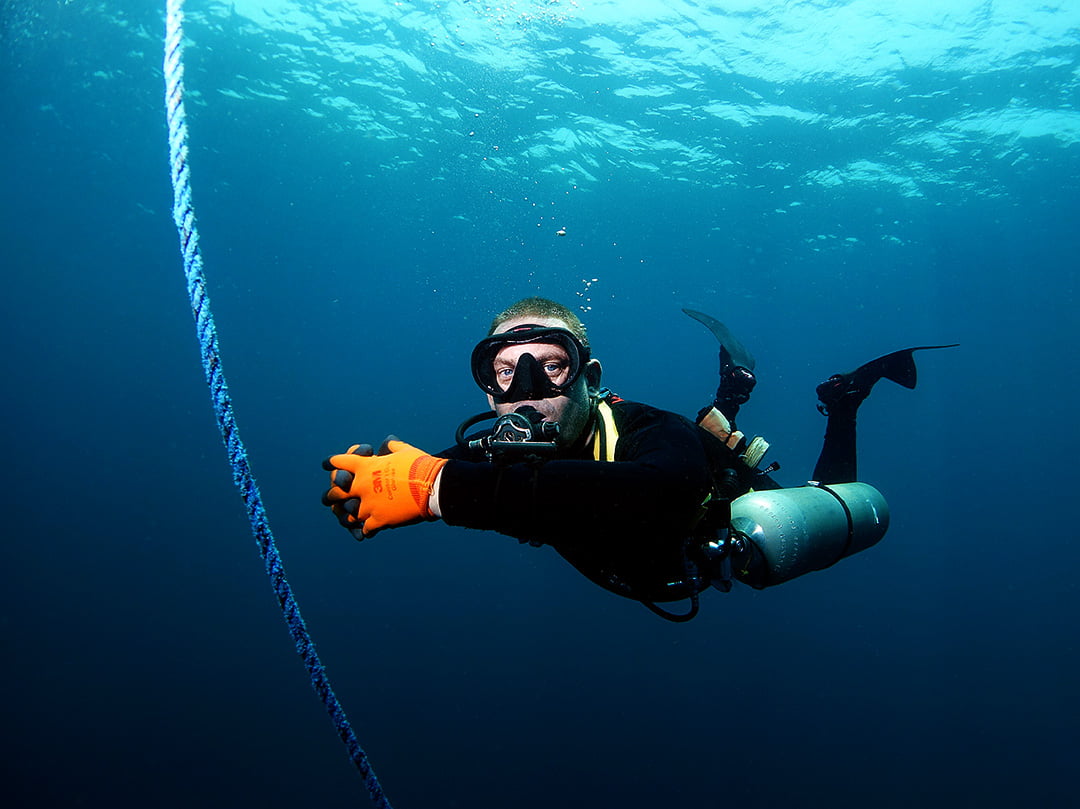
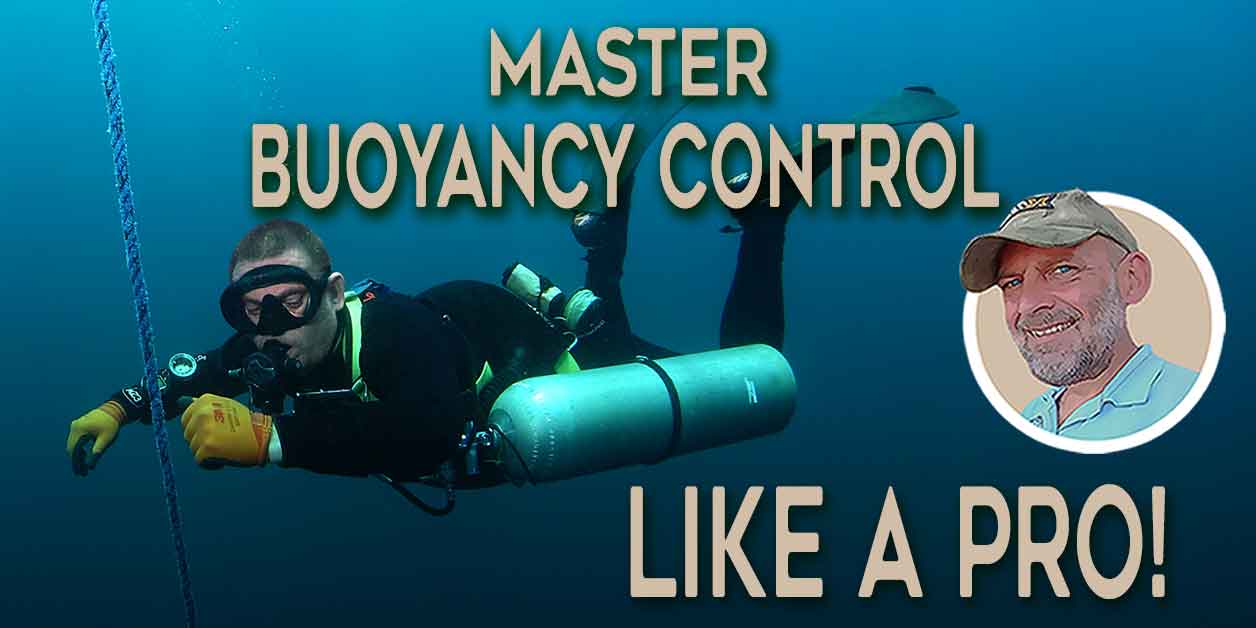
There are a number of factors that can cause seemingly innate leg-heavy trim. It’s important to first rule out technique errors. Improper posture is the leading cause of leg-heavy trim; specifically dropping the knees by loosening the hips. Clench the buttocks to eliminate that. Eventually, it becomes habitual and unnoticed. The next step is to consider leg positioning. Reduce the force exerted by heavy limbs by reducing the effective length of the lever; bend your knees at 90-degrees to reduce the effect on your trim.
It is really helpful to video yourself practicing this. A lot of fundamental errors in technique aren’t very apparent when we are making them, but are glaringly obvious when reviewing practice footage afterward. Also, try doing deliberate practice without wearing fins; this literally stops you from compensating with your fins; which tends to accelerate technique development.
Another significant skills-based factor is how effectively you control the gas in your wing. A tiny deviation in trim causes gas to migrate to the highest point in the wing, rotating you out of trim. You have to counteract that by physically moving the gas back over your center of gravity; which often means physically raising your lower body a fraction above horizontal. The best sidemount wings limit the majority of wing capacity to the lower back area; which significantly reduces that issue as gas literally cannot migrate above your center of gravity. Controlling the gas in your wing is a learned skill that requires focused, deliberate practice. Eventually that corrective action becomes very subtle and unconscious.
Only once technique errors are eliminated as a cause, you should assess the buoyancy dynamics of your equipment. For instance, negatively buoyant fins can cause havoc with your trim when diving sidemount. If wearing neoprene booties, you could get a thicker pair to add positive buoyancy at the feet.
Hi, I’ve been playing around with buoyancy for the last few months to try to dial into a much more stable trim. What I think I’m seeing though is that as a biker and runner, the muscle density in my lower body makes so I consistently tip towards the feet. (Normally with a 2-3mm wetsuit in the pool I use zero weight with a al80 on a wing.). I compensate the tipping with a pair of 2’s on my shoulders. That makes it pretty easy to set in trim for several minutes, close my eyes, etc. but if I remove the 2’s and stop moving the fins, I inevitably tip towards the feet again. Same basic thing happens in sidemount.
Is what I’m finding normal? Or is there a way to drop the 2’s and yet compensate for the obvious change in where the fulcrum is. I’ve lengthened straps on the backplate and the sidemount rig to make the waist strap pretty low on the hips. While this helps, it doesn’t solve. Mainly i guess, curious if there’s a way around using trim weights.